« Features
Dystopian Abstraction
By David Pagel
Abstract painting has been linked to so many virtuous virtues that it’s hard to see it as being an especially effective vehicle for taking a walk on the dark side of life. Its ongoing association with moral improvement, heightened perception and progressive development has left it in sorry shape for diving, very deeply, into what used to be known as society’s ugly underbelly but today is treated as business as usual, especially among those for whom unremitting viciousness is standard operating procedure.
For more than a century, the light of reason and the glow of enlightenment have been fundamental to abstract painting’s purpose and proclivities, not to mention its identity. These positive, even uplifting features emerged with Cubism’s promise to reveal a brave new world, in a brave new way. They gained clarity when Malevich & Co. stripped things back to the basics, boiling the inessentials out of the picture. They expanded their parameters when Kandinsky and his cohorts insisted upon art’s spiritual dimensions. And they showed impressive adaptability when Mondrian and his colleagues aligned art and design with more sober sensitivity than usual. The bright light of reasoned enlightenment flirted with danger when the Futurists talked the talk of destruction but walked the walk of compositional innovation, taking a detour from darkness toward the flashy dynamics of pictorial punch. The redemptive thrust of abstract painting’s teleological features came crashing back to earth when Arthur Dove brought the wide-open spaces of the American landscape into the picture. His gritty syntheses of images and materials put the blank-slate optimism of Old World Modernism on a collision course with the look, feel and atmosphere of the visible world, otherwise known as the real thing.
This down-to-earth maneuver laid the groundwork for a type of abstract painting that has not only managed to disentangle itself from the Utopian strands that have been woven into its tradition, but has gone quite some distance to explore many things abstraction has never been: dark, pessimistic, and grim-not quite despairing, or cynical, or nihilistic, but harrowing, hellish and icy-and worlds away from the hard-won pleasures and earnest sense of self-discovery that have been built into just about every type of abstract painting that has flourished over the last century or so. Dystopian Abstraction is not a movement or a school or a manifesto-accompanied practice undertaken by a group of like-minded painters; it’s a term I made up to capture the tone, texture and temperature-as well as the ethos and outlook-of works by four painters currently working in the lower left-hand corner of the United States: Kevin Appel and Adam Ross, in Los Angeles; Dimitri Kozyrev, in Tucson, Ariz.; and Scott Anderson, in Albuquerque, N.M.
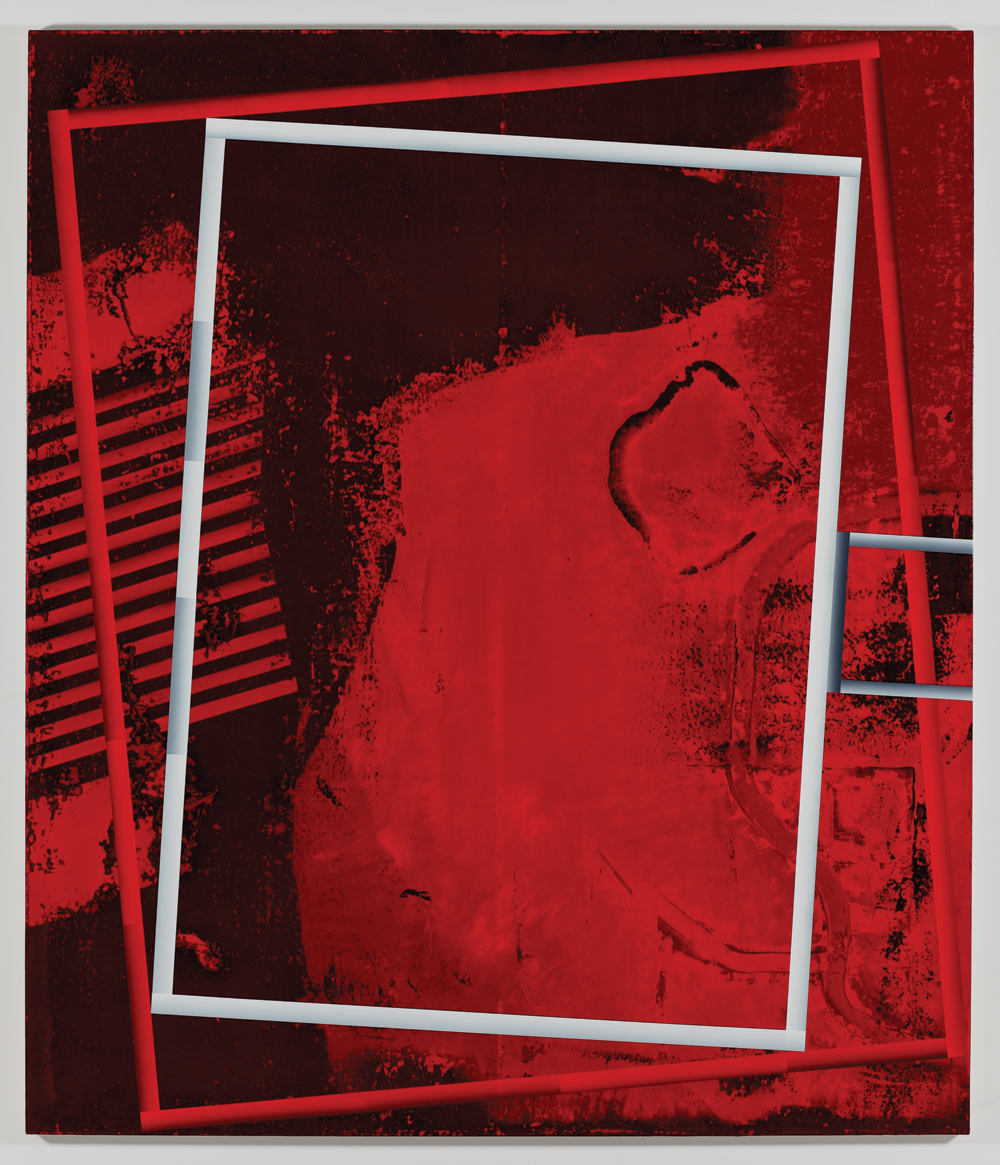
Adam Ross, In an Indeterminate Place #3, 2012, oil, alkyd, and acrylic on canvas over panel, 84” x 72”. Photo: Brian Forrest. Courtesy of Angles Gallery, Los Angeles.
The dystopian demeanor of their acerbic works measures the distance that separates them from the moral high ground many other types of abstraction presume to occupy, whether boldly and aggressively-as if they know what’s best for everyone-or quietly and politely-as if such things were simply assumed, and it was untoward to mention them directly. Explicitness, along with cool ruthlessness, point-blank bluntness and a dyed-in-the-wool disgust for dreamy sentimentally are integral to these four artists’ works, which can seem harsh in their unvarnished honesty, but is never nasty, like art that fetishizes degradation, or sarcastic, like art that merely wants to look smart. Their congenital aversion to redemption, and all its watered-down surrogates, is complicated by their profound doubts about just about everything, including the effectiveness of their own endeavors. Think Ad Reinhardt without the underhanded embrace of transcendence; or Surrealism, without the shock of overwrought sexiness; or science fiction, without the inexorable logic of its conventionally constructed narratives. Rather than pretending that abstract painting sets us free by providing some sort of escape or hoary sort of transcendence, these four painters use abstraction to dive more deeply into the reality of the present, turning its vertiginous ups and downs and endless twists and turns into a compressed labyrinth from which there is no escape. Infinity never felt so claustrophobic.
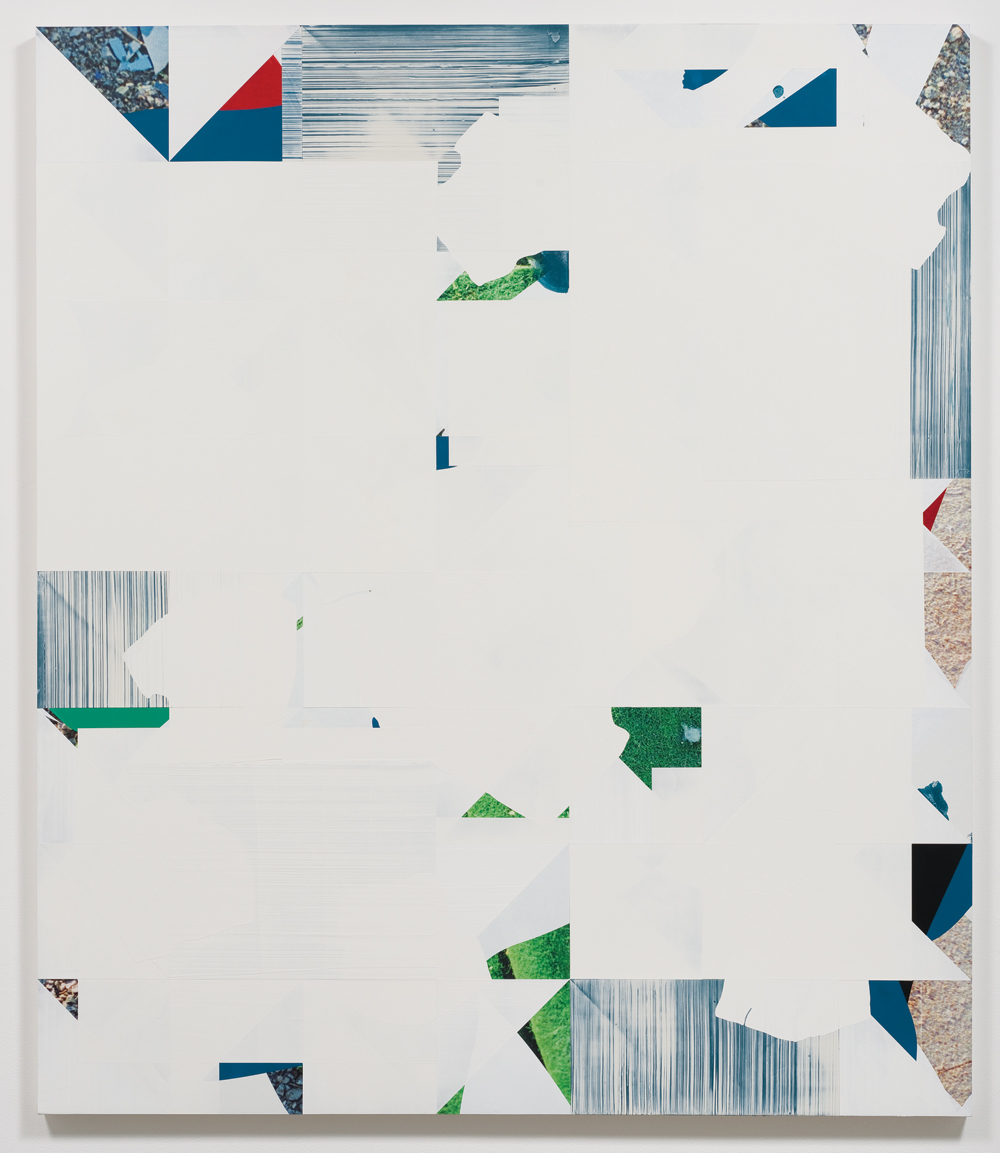
Kevin Appel, Salton Sea, 2012, (Green Rug), acrylic, oil, and UV cured ink on canvas over panel, 77” x 66”. Photo: Robert Weidermeyer. Courtesy of the artist.
The wide-open spaces of the western United States may have something to do with the wide-open ambitions that take shape in the weirdly realistic paintings of Appel, Ross, Kozyrev and Anderson, but I think that what really matters is their go-it-alone approach to painting: the conviction that what each of them is after has less to do with community or context or consensus, and is more aligned with their divergent desires to loosen the knot into which freedom and entrapment have been tied. Will and compulsion have long been concerns of abstract painters, particularly in this country, and especially as they have played out in terms of intention and accident, choice and necessity, improvisation and formulaic self-expression. Skeptical of everything and so full of doubt that there seems to be little room for much else, the paintings by these four artists leave viewers with little choice but to confront them head-on, with no assurances of self-improvement and no guarantee that they will make sense, provide enlightenment or deliver anything more than brooding confusion-every flash of insight overshadowed, but not obliterated, by the darkness at the heart of their fantasy-fueled realism.
Appel’s paintings are at war with themselves. While that may be hell for the artist, it’s great for viewers: We get to watch, from a distance, a give-and-take battle whose quiet fury is fueled by a kind of decisiveness that brooks little compromise and takes no prisoners. Each of Appel’s paintings begins as a pristine, porcelain-coated canvas onto which enlarged photographs get mechanically printed in ultraviolet inks. The photographs depict abandoned buildings, piles of rubble and other broken-down bits of detritus that Appel has shot around the netherworld of Southern California’s environmentally damaged deserts. But rather than treating these contemporary ruins and chemically compromised settings as old-fashioned underpaintings, on top of which nuance and richness accumulate slowly and steadily, Appel blots them out, almost completely, with each layer he adds. Obliteration, not accumulation, is the logic at work in his paintings, which do not thrash around in the throes of expressive, theatricalized destruction so much as they undertake this task with the deliberation of an engineer or the dispassionate intensity of a technician who is really good at what he does, despite its distastefulness. In Appel’s paintings, the fury gets buried, but it’s not invisible. Permeating his brittle images is the sense that whatever was happening before the current application of paint cannot go on, even though no other alternatives appear on the horizon. Desperation and deliberation take charged form. Among the prettiest, most sensitive scorched-earth paintings out there, Appel’s passionately detached abstractions rage against futility without the solace of false hope.
The icy precision of digital imagery meets the burnished romanticism of hand-painted pictures in Ross’ recent works, where gripping collisions of up-to-the-minute attitude and old-fashioned atmosphere form a gorgeous dystopia that is not all that different from reality-and all the more fascinating for it. Ross’ hallucinatory stews of oil- and water-based pigments seem to come from a far-off planet, accessible only by time travel or great leaps of the imagination. The strongest suck your body into a vortex where gravity has no pull, leaving you suspended high above a landscape that looks lunar, only stranger: maybe Martian, possibly aquatic. Scale is hard to pin down. So is depth. Made with as many as 60 layers of variously translucent paints and glazes, Ross’ paintings present views that seem to have been enhanced by powerful lenses. Space-age surveillance and its military applications come to mind, especially as they are celebrated in big-budget Hollywood productions in which nuance disappears in spectacular orgies of special effects. In contrast, the richly detailed surfaces of Ross’ paintings compel viewers to attend to several story lines simultaneously, which often unfold slowly, mysteriously and with endless ambivalence. While wondering about the size, substance and significance of what you’re looking at, you also wonder about toxicity, inhospitality, missed opportunities and the difficulty of starting over. Starting fresh is out of the question. Ross’ wickedly contemplative images are slow burns that sizzle. They seem to have been made by a connoisseur of loneliness, someone who not only knows what it means to be lost, but also is able to amp up the scale and resonance of such individual experiences so that viewers get a glimpse of our entire species, and the planet we occupy, from that forlorn perspective.
For his part, Kozyrev concentrates on the immediate aftermath of the cataclysms that seem to lie in the distant past of Ross’ paintings. Jagged, but not angry, shattered, but still electrifying, the infrastructural ruin and laid-to-waste landscapes that take shape in Kozyrev’s high-octane paintings-which themselves appear to be on the verge of imploding-leave no room for wistfulness. Similarly dispensing with the I-told-you-so sanctimony of much science fiction, not to mention art aimed at loaded social issues, his high-keyed pictures are fatalistic in their depiction of the world coming undone. Imagine the earthly apocalypse from the perspective of a cold-eyed alien from another galaxy, who picked up the fiery spectacle on his own version of late-night TV. That gives you a feeling for the tone and tenor of Kozyrev’s weirdly operatic images: calm, cool and collected, while mildly amused by the spectacle, which is doubtlessly experienced as tragic, not to mention earth-shattering, by those in the thick of it. Born in St. Petersburg, Russia, educated in Athens, Ohio, and Santa Barbara, California, and now residing in Tucson, where he teaches at the University of Arizona, Kozyrev is a peripatetic painter whose clarity of vision causes him to stand out from any crowd into which he might otherwise fit. A master of hit-and-run illusionism, he paints pictures in which volumes flatten, things fall apart and chaos reigns. His Cubist-derived compositions give stunning form to the feeling of having the rug pulled out from under your feet: sudden and startling and over almost before you realize that something scary has happened. The consequences linger long after the fleeting incident fades into the past and, despite desires to the contrary, cannot be undone.
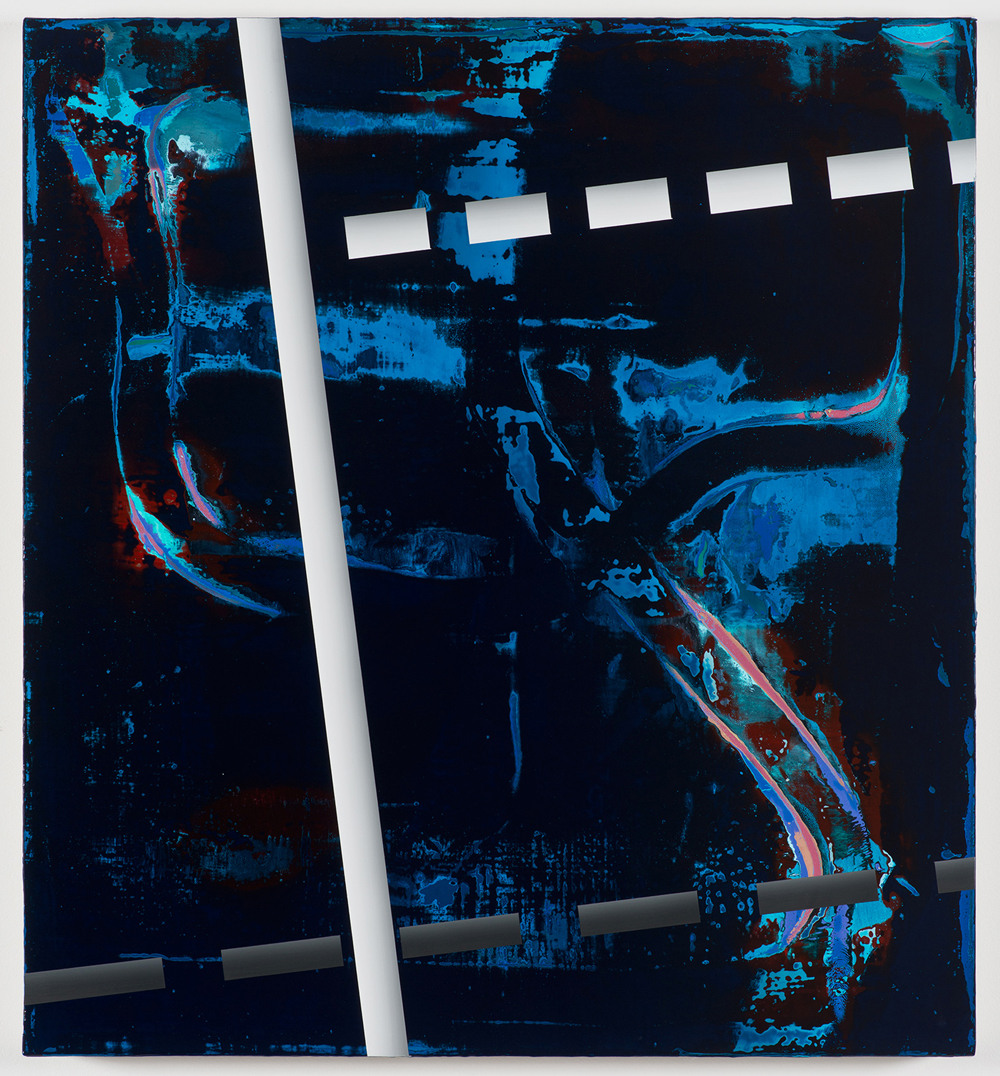
Adam Ross, Next to the Last Exit #7, 2012, oil, alkyd, and acrylic on canvas over panel, 26” x 24”. Photo: Brian Forrest. Courtesy of Angles Gallery, Los Angeles.
Next to the sleek surfaces, sharp contours and mechanistic features of Appel’s, Ross’ and Kozyrev’s paintings, Anderson’s canvases look clunky: Homemade and hokey, their roughly cobbled compositions, make-do arrangements and scrappy, to-hell-and-back surfaces make them look as if they were made on a deserted island by a castaway whose supplies are inadequate to the task, whose memory is fading and whose abilities are also declining-not yet completely lost, but close enough to that prospect that it’s not far-fetched to say “The end is near.” A sense of homelessness pervades Anderson’s paintings, which simultaneously seem homely, even corny, if not for the equal and opposite sense that something very basic has gone bad, like curdled milk. Warmed-over woefulness takes infectious shape in Anderson’s eccentric paintings, whose parts do not add up to harmonious wholes-their congenital incompleteness leaving us wanting more, even if we can’t say what that might be. Clarity of understanding and easy-going agreement are the last things Anderson wants from his discombobulated still lifes, in which it’s often impossible to determine just what it is that you are looking at, much less to know what all the clues might mean. Cultivating illegibility and incomprehension in a way that recalls Jasper Johns’ enigmatic emblems, Anderson slaps together bits of this and bits of that to make viewers miss something that we can neither name nor recall. To lose what you have already lost is a curious kind of tragedy, but that is what happens before Anderson’s uncanny paintings, which are neither truly infuriating nor exactly reassuring, but some unsettling combination of both.
In the end, Dystopian Abstraction takes no solace in the idea that the truth is within us. It looks not inward, but outward, at the real world, where the prospects are not much better, but certainly no worse.
David Pagel is an art critic who writes regularly for the Los Angeles Times. He is a professor of art theory and history at Claremont Graduate University and an adjunct curator at the Parrish Art Museum in Water Mill, New York, where he organized “Underground Pop” and “Damaged Romanticism.” An avid cyclist, Pagel is a five-time winner of the California Triple Crown.

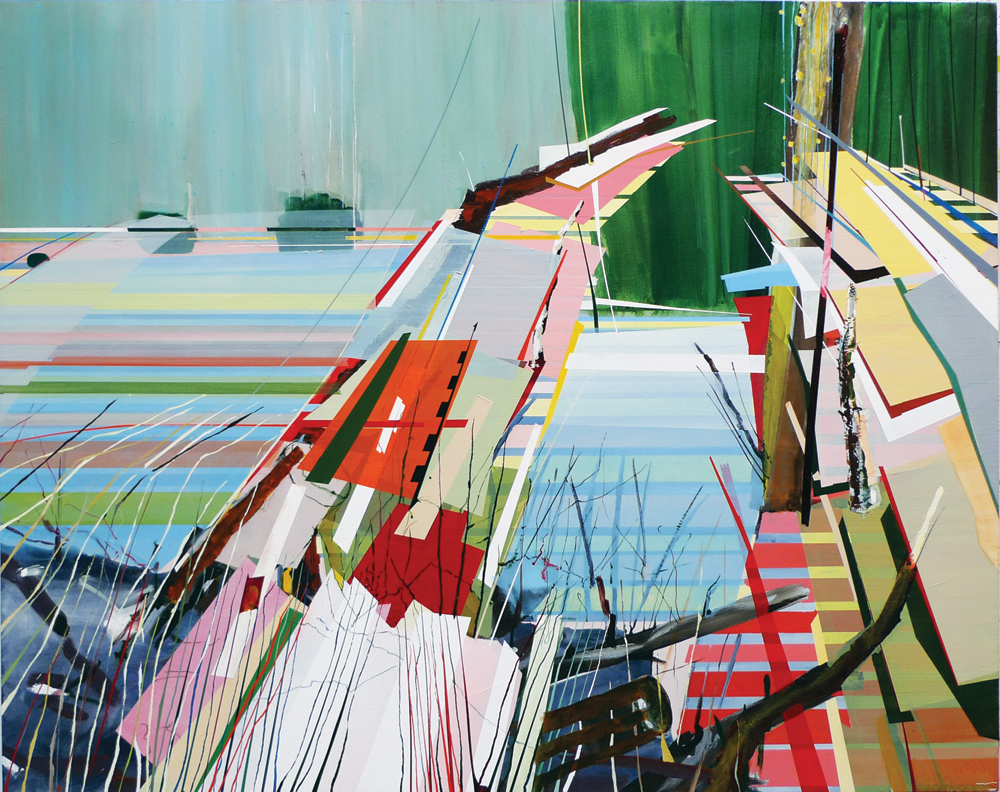
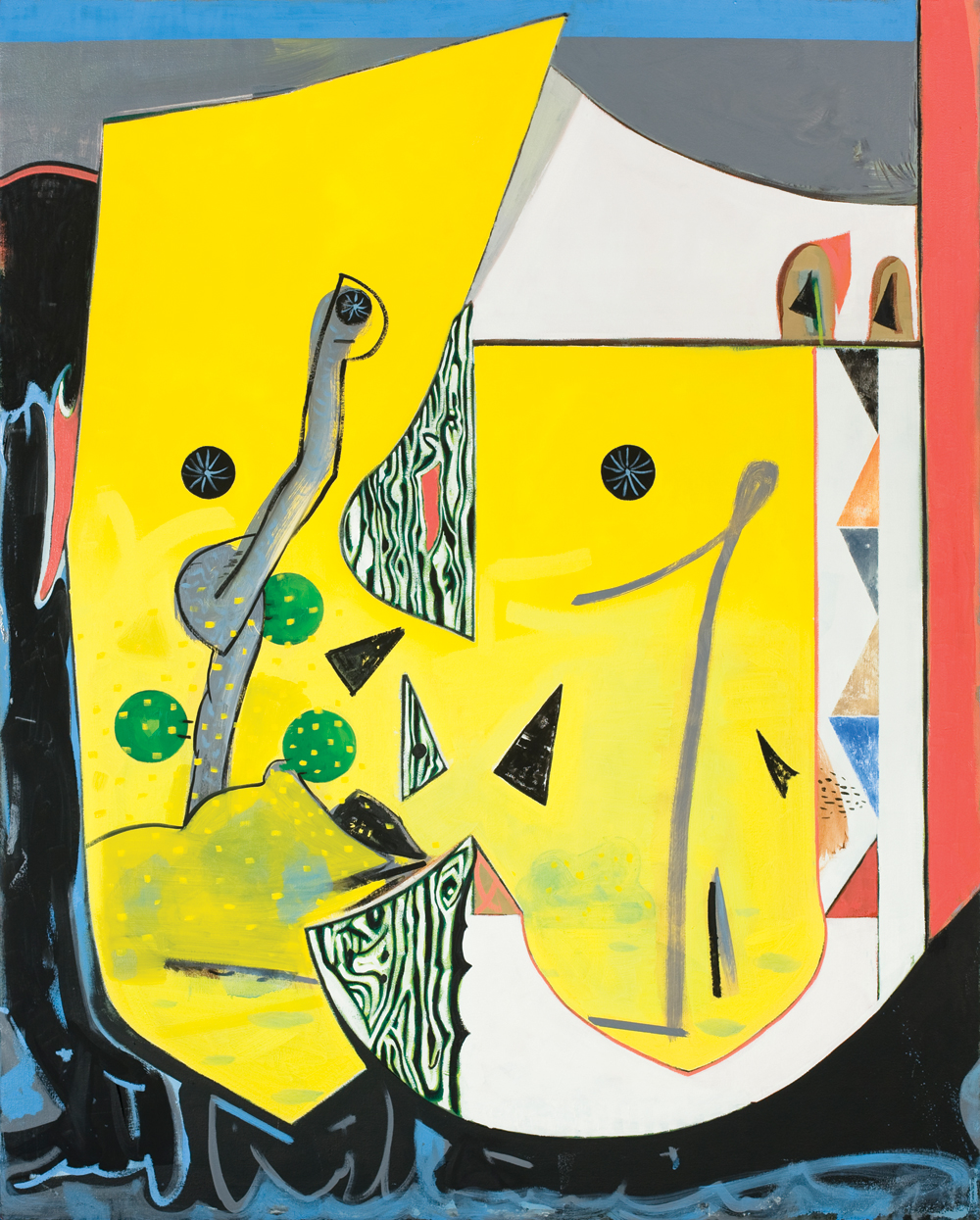


































Leave a Reply
You must be logged in to post a comment.